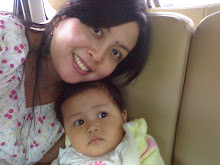| If you find out that you’re expecting a breech baby before delivery it may be possible to turn your baby. An obstetrician will try to convince your baby to go head-down at 37-40 weeks. The process is called external cephalic version (ECV), and works in about two-thirds of cases, although it’s less successful in first-time pregnancies. An obstetrician tries to change the breech baby’s position by pressing on the mother’s abdomen.
If it doesn’t work, women can try a traditional Chinese technique called moxibustion. This is where a cone of moxa (dried mugwort) is lit and held as close as is comfortable over the Bladder 67 acupressure point on each foot for about five minutes twice a day. The technique can be used on its own or in combination with acupressure or acupuncture, although that suggestion is more likely to come from a midwife than an obstetrician. If your baby refuses to turn, in most cases you will be offered a caesarean section. |
Try things at home
| There are also things you can try at home to turn your breech baby: Spend time on all fours. This allows gravity to bring the baby’s head down. For example get down on the floor each day and read the paper or a magazine while on all fours. Gentle lateral lunges. These can widen the pelvic outlet and help the fetus turn. Ironing board. Lie on a plank or ironing board placed at a 45 degree angle, head down and knees bent for 15 minutes three times a day. Gravity encourages the fetus to move toward the top of the uterus and turn under. Warmth and cold. Place an ice pack on the top of your uterus and a warm pack at the bottom. The fetus will move towards the heat. Singing and talking. Make a tape of your voice singing and talking to the baby. Play it back through headphones placed near your pubic bone to encourage the fetus to move towards the pleasant sounds.
Visualizations. Use positive mental power while performing the above procedures and visualize the fetus turning in your uterus. |
Different types of breech:
| Frank : bottom down and legs bent or extended up towards the face Complete–baby : is sitting cross-legged Footling : one or both the baby’s knees or legs are closest to the birth canal |

No comments:
Post a Comment